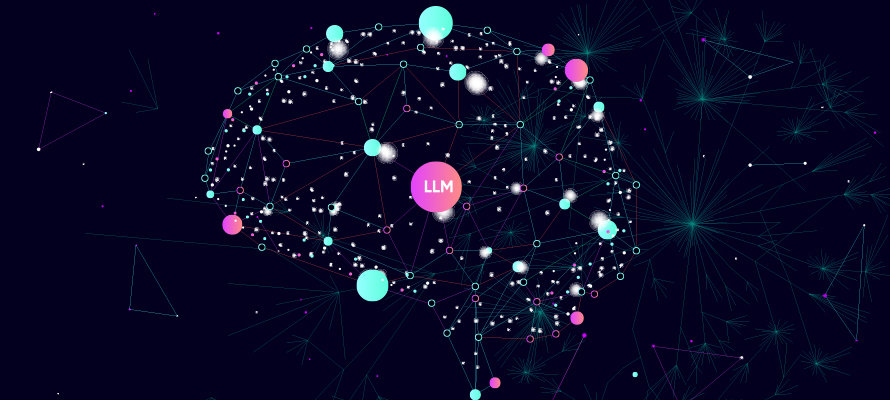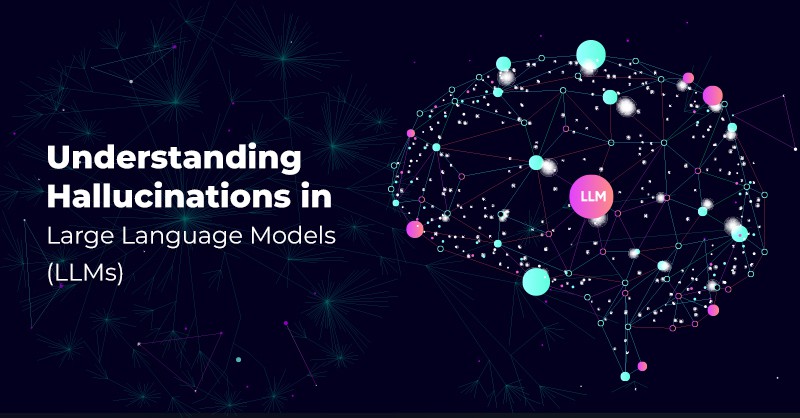Understanding Hallucinations in Large Language Models (LLMs)
Dr. Hassan Sherwani
Data Analytics Practice Head
April 12, 2024
Build AI Models Free of Hallucinations with Royal Cyber
In artificial intelligence (AI), large language models (LLMs) have made significant strides, revolutionizing various industries with their natural language understanding capabilities. However, alongside their prowess in generating coherent responses, LLMs sometimes exhibit a phenomenon known as hallucinations.
Read our case study to learn how we helped our client analyze customer reviews with LLMs.
This blog aims to be a guide to hallucinations in LLMs by delving into the intricacies of LLM hallucinations and exploring their causes, potential utility, and mitigation strategies.

What Does it Mean for an LLM to Hallucinate?
Hallucination in LLMs refers to instances where these models generate text that deviates from factual accuracy or coherence. Despite extensive exposure to diverse datasets during training, LLMs may produce outputs that need more factual foundation or relevance to the provided prompts. Users often unknowingly rely on these responses, leading to detrimental outcomes in fact-driven domains like law, healthcare, and finance.
- In 2023, a lawyer was fired from his law firm when it was found that his motion, which ChatGPT drafted, had created fake cases in the document.
- An amusing example is ChatGPT, who, when asked how Mahatma Gandhi used Google LLC Suite to organize against the British, earnestly answered that Gandhi used Gmail to send emails and collaborated on projects with Google Docs.
- Microsoft Bing Chat was 2023 involved in a libel lawsuit due to their chatbot generating statements that conflated an author on aerospace with a convicted terrorist.
What Causes LLMs to Hallucinate?
There are several causes of LLM hallucinations, including:
Training Data
- LLMs undergo training on vast and varied datasets, making verifying the accuracy and fairness of the information they ingest challenging.
- Factual inaccuracies in the training data can lead to the model internalizing and regurgitating incorrect information during text generation.
Lack of Objective Alignment
- When repurposed for tasks beyond their original scope, LLMs may exhibit random hallucinations due to their inability to discern facts from untruths.
- Domain-specific tasks such as medicine or law require additional guidance for accurate inference, as LLMs are primarily trained for general natural language processing.
Prompt Engineering
- The quality and clarity of the prompt provided to LLMs significantly influence their output.
- Ambiguous or insufficient prompts can result in incorrect or irrelevant responses, contributing to hallucinations.
Can Hallucinations be Useful?
- Creative storytelling: LLMs capable of hallucinating beyond training data can craft original narratives and storylines, fostering creativity.
- Idea generation: Hallucinations facilitate the exploration of diverse ideas and perspectives, aiding brainstorming sessions and innovation efforts.
How Do You Solve LLM Hallucinations?
Context Injection
One-shot and Few-shot Prompting
Retrieval-Augmented Generation (RAG)
Domain-specific Fine-tuning
How Royal Cyber Can Help Control LLM Hallucinations
Author
Priya George
Recent Posts
- Defining Headless Architecture for eCommerce Businesses July 19, 2024
- Bridging Offline and Online Shopping Experiences with SAP Customer Data Cloud July 19, 2024
- Maximizing ITSM Efficiency with ServiceNow Now Assist July 19, 2024
- Building High-Performance Python Applications with Ray on Apache Spark July 18, 2024
Recent Blogs
- Harness the power of AI with Salesforce Einstein GPT for Service Cloud. Unlock innovative ways …Read More »
- Discover Salesforce Hyperforce, the future of cloud deployment. Explore its scalability, security, and global reach, …Read More »
- Artificial Intelligence (AI) has been making significant waves across various industries, revolutionizing business operations.Read More »



